The Federal government organized the Coronavirus Task Force to develop and implement immediate relief in response to the incredible economic turmoil created by the coronavirus pandemic. As of Friday, March 27, 2020, three phases of relief have been enacted.
We have reviewed these bills in light of what may be most relevant or have the most impact for our clients and their businesses. These measures are drastic, but temporary, and are intended to carry our nation through these unprecedented times. All of us at Trainor Fairbrook are here to walk with you as we navigate the new changes and challenges together.
Coronavirus Preparedness and Response Supplemental Appropriations Act
Effective March 6, 2020, the Coronavirus Preparedness and Response Supplemental Appropriations Act provided $8.3 billion in emergency funding for federal agencies to respond to the coronavirus outbreak.
Notable provisions for Businesses:
The Small Business Administration (“SBA”) Economic Injury Disaster Loans program received additional funding and denoted the coronavirus as a disaster for which loans may be obtained. This program provides working capital loans of up to $2 million to help small businesses, small agricultural cooperatives, small businesses engaged in aquaculture, and most private, non-profit organizations of all sizes meet their ordinary and necessary financial obligations that cannot be met due to the coronavirus disaster. Loans are available to businesses that have been financially impacted as a direct result of COVID-19 since January 31, 2020. The deadline to apply is December 16, 2020. Applicants may apply online or download applications at https://disasterloan.sba.gov/ela.
Families First Coronavirus Response Act
Effective March 18, 2020, the Families First Coronavirus Response Act responds to the coronavirus outbreak by providing paid sick leave and free coronavirus testing, expanding food assistance and unemployment benefits, and requiring employers to provide additional protections to health care workers, among other funds and tax credits to assist those affected by the coronavirus disaster.
Notable provisions for Individuals:
The Emergency Paid Sick Leave Act offers eligible employees, in addition to any state sick leave or employer sick policies, eighty hours (or two weeks) of paid time off from work to the extent the employee cannot work because:
- The employee is subject to a Federal, State or local quarantine order related to COVID-19;
- The employee has been advised by a health care provider to self-quarantine due to concerns related to COVID-19;
- The employee is experiencing symptoms of COVID-19 and seeking medical diagnosis;
- The employee is caring for a quarantined individual;
- The employee is caring for employee’s children due to school or child care provider closures; or
- The employee is experiencing any substantially similar condition.
Paid sick leave is to be calculated based on an employee’s regular rate or applicable minimum wage, but an employer shall not be required to pay more than $511 per day and $5,110 in the aggregate for leave due to the reasons listed in items (1) through (3) above, or $200 per day and $2,000 in the aggregate for leave due to the reasons listed in items (4) through (6).
Eligible employees include any employee employed by an individual or entity with 500 or less employees. However, the Secretary of Labor retains authority to issue regulations for good cause to exempt small businesses with fewer than 50 employees from the requirement of providing paid sick leave, specifically due to employee’s caring for children during school or child care provider closures, when the imposition would jeopardize the viability of the business.
The Emergency Family Medical Leave Expansion Act expands the Family and Medical Leave Act (“FMLA”) to include emergency paid family leave.
Eligible employees will receive twelve weeks of job-protected leave to care for children at home because of school or child care provider closures due to a public health emergency.
The first ten days of the emergency FMLA leave can be unpaid (employees may elect to use other paid benefits to cover those ten days), the remaining time must be paid at two-thirds the employee’s regular rate, but an employer shall not be required to pay more than $200 per day or $10,000 in the aggregate.
Eligible employees include those employed by an individual or entity with 500 or less employees for the thirty days preceding the coronavirus emergency declaration.
Notable provisions for Businesses:
Tax Credits are designated to employers to offer relief for the unanticipated costs of providing emergency sick leave. Employers will receive credits against employment and payroll taxes for each calendar quarter in an amount equal to 100 percent of the qualified sick leave wages paid by the employer with respect to that quarter.
CARES Act
Effective March 27, 2020, the Coronavirus Aid, Relief and Economic Security (CARES) Act includes $2 trillion in emergency relief, the largest financial stimulus in American history. The legislation covers an array of programs, including direct payments to Americans, an aggressive expansion of unemployment insurance, billions in aid to large and small businesses and a new wave of significant funding for the health care industry.
Notable provisions for Individuals:
Recovery Rebates provide checks of up to:
- $1,200 for single taxpayers
- $2,400 for married joint filers
- $500 for each dependent child
These amounts are based on federal 2018 returns. Checks are reduced for higher income taxpayers, with phaseouts beginning at $75,000 for single taxpayers and $150,000 for married joint filers, and ending for single taxpayers with incomes exceeding $99,000 and married joint filers with no children and incomes exceeding $198,000.
Taxpayers with little or no income tax liability, but at least $2,500 of qualifying income, would be able to receive $600 for single taxpayers or $1,200 for married joint filers.
Qualifying income includes earned income, Social Security retirement benefits and certain compensation and pension benefits paid to veterans.
Unemployment Insurance Benefits are expanded to provide:
- Temporary Pandemic Unemployment Assistance program for those not traditionally eligible for unemployment benefits (self-employed, independent contractors, those with limited work history, and others) who are unable to work as a direct result of the coronavirus public health emergency.
- Payments to states to reimburse nonprofits, government agencies, and Indian tribes for half of the costs they incur through December 31, 2020 to pay unemployment benefits.
- An additional $600 per week payment to each recipient of unemployment insurance or Pandemic Unemployment Assistance for up to four months.
- Funding to pay the cost of the first week of unemployment benefits for states that choose to pay recipients as soon as they become unemployed instead of waiting one week before the individual is eligible to receive benefits.
- An additional 13 weeks of unemployment benefits to help those who remain unemployed after weeks of state unemployment benefits are no longer available.
- Funding to support “short-time compensation” programs, where employers reduce employee hours instead of laying off workers and the employees with reduced hours receive a pro-rated unemployment benefit. This provision would pay 100 percent of the costs they incur in providing this short-time compensation.
- Funding to support states which begin “short-time compensation” programs. This provision would pay 50 percent of the costs that a state incurs in providing short-time compensation.
Retirement Funds waiver of the 10-percent early withdrawal for distributions up to $100,000 for coronavirus purposes. Income attributable to such distributions would be subject to tax over three years and taxpayer may recontribute to an eligible retirement plan within three years without regard to the annual cap. Coronavirus-related distributions include distributions to an individual:
- Who is diagnosed with COVID-19
- Whose spouse or dependent is diagnosed with COVID-19
- Who experiences adverse financial consequences as a result of being quarantined, furloughed, laid off, having work hours reduced, being unable to work due to lack of child care, closing or reducing hours of a business owned or operated by the individual due to COVID-19, or other factors as determined by the Treasury Secretary
Student Loans Tax Exclusion provides income tax exclusion for individuals who are receiving up to $5,250 in student loan repayment assistance from their employer.
Charitable Deduction Limits are revised to permit an allowance of $300 above the line deduction for charitable contributions in 2020. Additionally, the 50 percent of adjusted gross income limitation for 2020 is suspended. For corporations, the 10-percent limitation is increased to 25 percent of taxable income.
Notable provisions for Businesses:
Small Business Administration Expansion
- SBA will administrator a $349 billion Paycheck Protection Program
- Eligible recipients include small businesses, self-employed individuals, nonprofits and Tribal business concerns
- Allowable uses for the loans include payroll, rent, mortgage payments, and utility costs.
- Borrower eligible for loan forgiveness on amounts spent during an 8-week period after the origination date of the loan on qualifying payroll costs, interest payments on mortgages, rent, and utilities. The amount forgiven is a function of the number of employees retained.
- Additional $10 billion granted to the SBA Economic Injury Disaster Loan program to provide up to $10,000 to small businesses for immediate relief to cover operating costs.
- $17 billion granted to SBA to cover 6 months of payments for small businesses with existing SBA loans so that the small business is relieved of making those payments.
- $350 billion is made available in loans for small businesses with less than 500 employees.
Tax Breaks
- Employee Retention Tax Credits provides a refundable payroll tax credit for 50 percent of wages paid by employers to employees during the COVID-19 crisis. The credit is available to employers whose (1) operations were fully or partially suspended, due to a COVID-19-related shut-down order, or (2) gross receipts declined by more than 50 percent when compared to the same quarter in the prior year. The credit is generally provided for the first $10,000 of compensation, including health benefits, paid to an eligible employee and for wages paid or incurred from March 13, 2020 through Dec. 31, 2020.
- Limitation on Business Interest is temporarily modified to increase the limitation on the ability to deduct interest expenses from 30 percent to 50 percent of taxable income for 2019 and 2020. (This may necessitate filing amended or superceded 2019 returns.)
- Qualified Improvement Property receives an amendment to enable businesses to immediately write off costs associated with improving facilities instead of depreciating them over the life of the building. This would allow amending a prior year return to take advantage of this provision and correct a drafting error in the 2017 tax reform law.
- Net Operating Losses are modified to provide that a net operating loss from 2018, 2019 or 2020 can be carried back five years, and the 80% taxable income limitation from 2017 is temporarily removed to allow a net operating loss to fully offset income. Pass-through entities, sole proprietors, and taxpayers other than corporations may also benefit from the relaxed net operating loss carryback. For example, with this change, couples with more than $500,000 in nonbusiness income, including capital gains from real estate investments, may deduct all losses to fully offset taxable income.
- AMT Credits are modified to accelerate the ability for companies to claim eligible alternative minimum tax (AMT) credits now instead of as originally expected through 2021.
Forbearance of Residential Mortgage Loan Payments for Multifamily Properties with Federally Backed Loans provides up to 90 days of forbearance for multifamily borrowers with a federally backed multifamily mortgage loan who have experienced a financial hardship. Borrowers receiving forbearance may not evict or charge late fees to tenants for the duration of the forbearance period. Applicable mortgages include loans to real property designed for five or more families that are purchased, insured or assisted by Fannie Mae, Freddie Mac or HUD.
Temporary Moratorium on Eviction Filings for 120 days beginning on the date of enactment, landlords are prohibited from initiating legal action to recover possession of a rental unit or to charge fees, penalties or other charges to the tenant related to such nonpayment of rent where the landlord’s mortgage on that property is insured, guaranteed, supplemented, protected, or assisted in any way by HUD, Fannie Mae, Freddie Mac, the rural housing voucher program or the Violence Against Women Act of 1994.
From all of us at Trainor Fairbrook, we continue to extend our best wishes to you, your family, and your business, and remain available to assist you as we confront the rapidly changing and unknown business and personal challenges together.







